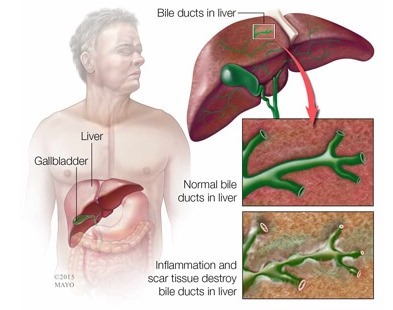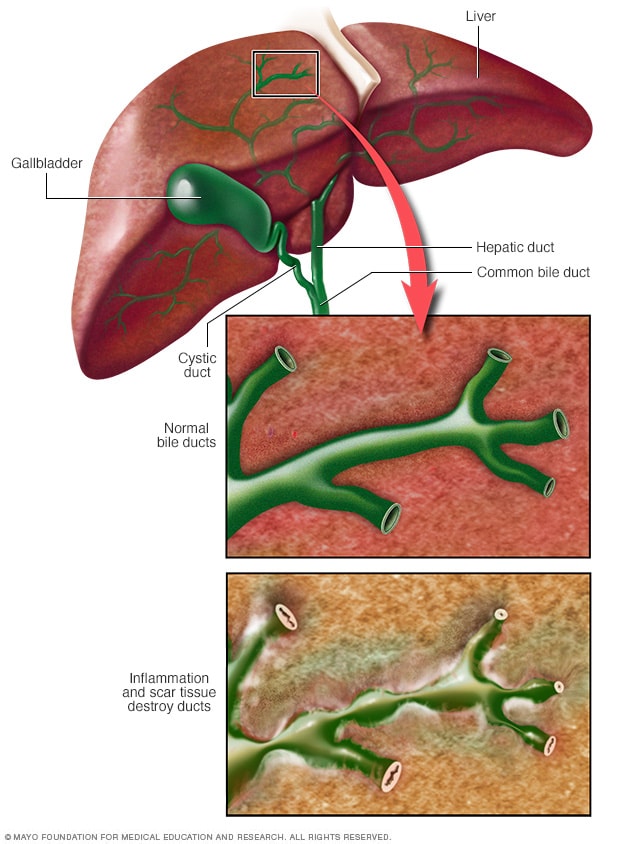Primary BiliaryCirrhosis
What is Primary Biliary Cirrhosis (PBC)?
Primary biliary cirrhosis (PBC) is a disease of the small bile ducts in your liver. It is a chronic disease which means it is ongoing. It leads to liver inflammation and eventually, to a disease called cirrhosis.
For most people, PBC progresses slowly and they can live active, productive lives.
Read this information to understand:
- How your liver and bile ducts work.
- How PBC is diagnosed.
- How to manage the symptoms of PBC.
- The importance of follow-up care.

How the Liver Works ?
The liver is the largest solid organ in your body. Fluid produced by the liver is called bile. Bile travels through the liver ducts and empties into your intestines to help with the digestion of fat in your diet (Figure 1). Bile also carries waste products, such as cholesterol and bilirubin, out of the liver.
About Primary Biliary Cirrhosis
In the early stages of PBC, the small bile ducts and the tissues around them become inflamed. As the inflammation gets worse, scar tissue forms which then blocks the bile ducts. As scar tissue builds up in the bile ducts, it becomes more difficult for the liver to work like it should.
The inflammation and scar tissue buildup leads to cirrhosis, a condition in which scar tissue affects blood flow through the liver and keeps it from working normally.
Who gets PBC?
PBC is most often diagnosed in women in their 40s and 50s. Women have it 10 times more often than men. It is slightly more common among siblings and in families where one member has had the disease. The disease is uncommon, but the number of people diagnosed with it is rising.
What are the symptoms of PBC ?
Many people with PBC have no symptoms at all. The disease may be diagnosed during a routine health exam or when a blood test is done for another reason. After diagnosis, many people have no symptoms for years. Early symptoms may include:
- Feeling tired.
- Itching on the palms of your hands and soles of your feet. Some have itching everywhere.
- Dry eyes and mouth.
As the disease progresses, symptoms may include: - Yellowing of the skin and eyes, known as jaundice.
- Gastrointestinal bleeding.
- A blotchy, slightly tanned appearance to the skin, called hyperpigmentation.
- Excess fluid in the abdomen, called ascites.
- Swelling, called edema, particularly in your ankles.
- Waxy bumps that most often appear on the eye’s upper and lower lids.

